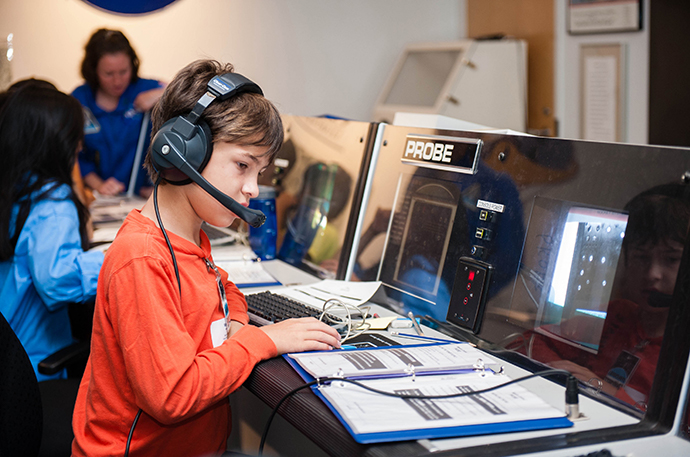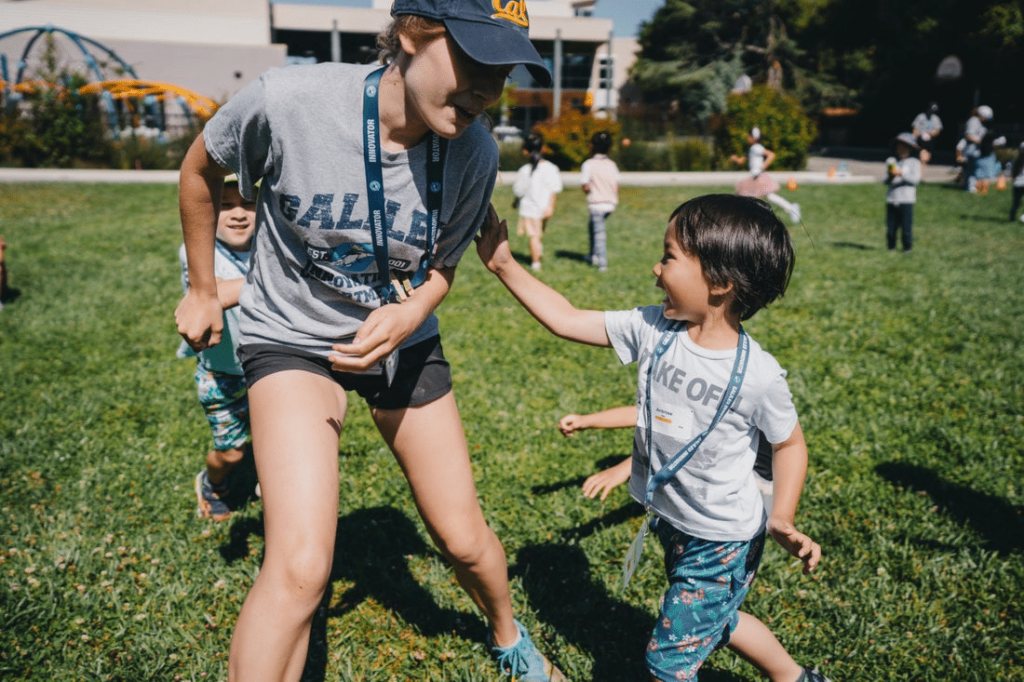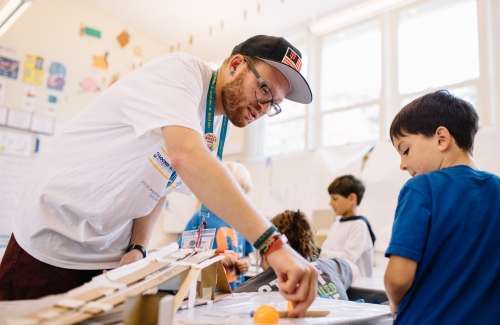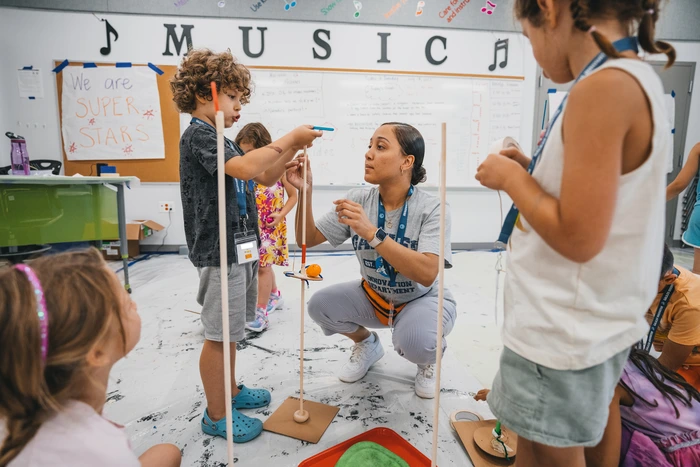Remember going to the public library as a kid? It was like a trip to a toy store—only better—because without spending a dime, you could walk out with a stack of as many exciting adventures as two hands could carry. And, you could go back week after week for a similar haul: picture books illustrated by cartoonists and artists and novels whose chapters told stories of compelling characters from long ago and far away. Many of us learned about the world through books long before we were old enough to venture outside of our homes and neighborhoods.
The digital age provides more competition for our time and more types of media with which to engage our minds. But reserving room in our days to interact with print media, including books, magazines and newspapers, serves a higher purpose. In fact, developing a daily reading practice has benefits for kids of all ages, and for adults, too.
WHY READING MATTERS
Literacy, the ability to read and express ourselves in writing, is crucial for learning. After we learn to read, we spend the rest of our lives reading to learn. Brain research on reading reveals several key points. First, the act of reading connects and strengthens neural pathways in our brains. Because reading requires us to translate abstract symbols (letters, words and punctuation) and synthesize chunks of information (sentences and paragraphs), it gives our brains a pretty intense workout. The act of reading also improves our memory and attention span. Research conducted with identical twins in the U.K. determined that reading at an early age directly correlates with higher intelligence later in life. Researchers at Carnegie Mellon found that reading interventions with young children resulted in a rewiring of the brain’s white matter as visualized on brain scans. Both of these studies promote not only the benefits of early reading but the need for early intervention when readers struggle.
Besides building brain connections, reading can enlighten and change our minds, including our perceptions, impressions and understandings of others. By introducing us to characters with experiences and lives that are different than our own, reading significantly broadens our horizons, taking us inside the lives and minds of others. This has a powerful impact on social-emotional learning and easily generates empathy as we relate to conflicts in the lives of compelling literary characters.
JUST DO IT
Author Roberto Bolano wrote, “Reading is like thinking, like praying, like talking to a friend, like expressing your ideas, like listening to other people’s ideas, like listening to music, like looking at the view, like taking a walk on the beach.” Once convinced of the importance of reading in our lives, we must simply designate a time and place to do it. Deciding to make daily reading practice a priority can begin today.
Be a good example — The most effective way to convey the importance of setting aside time to read is to model it yourself. Make a trip to the library and have every family member choose a stack of books to borrow. Alternately, visit a bookstore so that each family member can select a book to bring home. Help kids choose by reading a few pages to themselves; if the story doesn’t hook them, have them re-shelf the book and select another. Your youngest non-readers will likely choose by looking at the pictures.
Get kids reading early — Read-alouds should begin in infancy, and board books are created just for this purpose. Include your tiniest kids in the daily reading practice and by the time they start pre-K, they will know how to hold a book right side up, turn the pages in sequence, find the title and read the pictures—all of which are important pre-reading skills. In addition, active play and supplementary activities prime preschoolers, getting them ready to learn to read for themselves.
Entertaining and relaxing — Reading is a great way to quiet the mind and body. It can be both entertaining and relaxing, thus it works well to include reading together or separately in your family’s bedtime routine.
Nurture interests and passions — There is literally a book out there for everyone, you just have to find it: for lovers of lizards, devotees of dance (including boys), followers of football and those who find bodily functions fascinating. There are even books about kids who have trouble reading. Emphasis on interests and passions should guide reading for pleasure. Once kids find one book they can get behind, help them to find others like it: books in a series, books by the same author, books on the same or a related topic or books curated by librarians.
eBooks vs. traditional pages — It is worth considering the difference between reading a traditional book and reading a digital version. Many people have preferences one way or the other, but here are a few considerations. A physical book is an actual representation of a story with a beginning, a middle and an end. You can flip back and visualize information in specific spots on the page. Many prefer to interact with the paper pages, citing the feel and even the smell as part of the experience. A study conducted with Millennials, “the most computer literate generation to enter the workforce,” revealed that with instant access to digital information, they prefer eBooks for research purposes. But despite interacting with various digital media throughout the day, when asked about reading a whole book, 90% agreed or strongly agreed they prefer to read traditional paper books.
Offer an incentive — If kids (or your partner) are reluctant to participate, give them some incentives to get started. Tie something positive to completing the daily reading practice at first: maybe you all go for a walk in the park or make banana splits afterward. Soon enough, the wonderful stories will be incentive enough as family members learn to choose “page-turners” they can lose themselves in.
Since cultivating a daily reading practice has so many benefits for kids (and adults) of all ages, don’t forget to include your older kids and teens. Maybe you choose an exciting new title in a genre you both appreciate and read together “book club” style. Or if your tween or teen has been assigned a novel at school that they are less than enthusiastic about, get your own copy and do a partner read. Make it fun and special with snacks or a mug of warm apple cider. Create a plot diagram or character sketch to aid kids’ comprehension. You can alternate reading pages aloud or read a chapter silently, then pause to discuss. Helping them in this way might get them over the apprehension of reading a book they can’t get excited about.

EMBRACE READING AS A FAMILY
Despite the challenges, we try to ensure the healthiest lifestyle for our families. We create the best possible environment and seek to balance diet and exercise. Developing a daily reading practice is healthy and beneficial for kids and adults alike, exercising our brains while providing entertainment and relaxation. It can be a fun and enjoyable part of the day to which everyone looks forward. It’s a healthy habit that will serve us well at every age and stage of life, helping us all to be learners for life.
Check out these summer camps in your area that provide hands-on, minds-on fun and motivate kids to be lifelong learners: San Francisco Bay Area, Southern California, and Chicagoland. Sign up for our mailing list to keep up-to-date on our camp happenings, innovation resources and registration information for our upcoming 2019 camp season.





